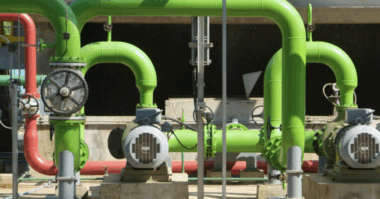Author: Henri Azibert
Pumping systems are extensively utilized throughout industrial, commercial, and water handling facilities to transport fluids. Pumps are ubiquitous, most often driven by electric motors; although engines and steam turbines are also used. Through the maze of reservoirs, pipes, and equipment, fluid is transformed and transferred. But how much energy is used to achieve that result? Was it optimal energy utilization or replete with waste? This is where the Energy Assessment Standards provide guidance, assistance, and direction.
There are three main documents for energy assessment of pumping systems:
- ASME EA-2 2009 Energy Assessment for Pumping Systems
- ASME EA-2G 2010 Guidance for ASME EA-2
- ISO/ASME 14414 2015 Edition, Pump system energy assessment
Although there are some differences in the requirements and scope of these documents, the essential provisions are to establish how much work is performed by moving a fluid from one location to another, and compare it to the amount of energy expended to accomplish the task. The primary methodology is to conduct audits of the various pumping systems within a plant or facility, document the existing conditions, analyze them, and make recommendations.
The first document to be published was commissioned from ASME by the Department of Energy. It established three levels of audits. The first one is a qualitative assessment of the conditions; the second one is a quantitative assessment; and the third level is a more in-depth qualitative assessment taken over time to establish load profiles, as conditions can change within a process. The level 1 audit is a pre-screening to determine which systems should be examined in greater details. Level 2 focuses on the systems identified in level 1 using accurate measurements at a given point in time. For stable processes, this is sufficient. However, if there is some variability in the process, then the systems must be analyzed over the varying conditions to get an accurate assessment.
A good example would be where a throttling valve is used to regulate the output of a pump which is targeted during a level 1 audit. A level 2 audit may take measurements at one point in time while the flow is substantially reduced due to decreased demand. Yet, a level 3 audit may determine that the pump operates at its best efficiency point (BEP) most of the time. The proportion of operating conditions during which the pump runs near or far from its BEP determines what alternative and more efficient solutions should be implemented. A variable speed drive can replace the throttling valve and keep the pump operating at maximum efficiency if the variability is substantial. On the other hand, if the great majority of the time the pump is at its BEP and deviates from it rarely, then a variable speed drive’s inherent power consumption would introduce preventable energy losses. ASME EA-2 is a guidance document on how to perform the audits and does not establish any separate requirements.
The ISO/ASME 14414 standard is also based on conducting audits. The requirements are structured around organizing and conducting an assessment, analyzing the data from the assessment, and reporting and documenting findings. In some respects, it has a broader reach than the ASME EA-2 standard. For example, water consumption reduction is also a factor to be investigated, as is the thermal management of sealing systems that can substantially impact energy usage. The energy footprint is not limited to the electrical power consumed by a motor, but the overall impact the system has on the environment.
In all these assessments, it is important to analyze the entire system, not just the individual components. The size, configuration and condition of the piping also impacts efficiency. Elbows too close to a pump suction will disrupt flow. In a case where several pumps are used, with the end point of the fluid close to the starting point, an intermediate stage far away would be wasteful, if it could just as easily be located in close proximity.
The efficiency of a pumping system involves a lot more than the pump efficiency. Although well-designed originally, the system energy efficiency might not have been a driving or primary consideration at the time. And then processes change, throughput increases or decreases, and components wear. There is much to be gained by conducting a thorough energy assessment.
You can learn more at the ASME website about Energy Assessment for Pumping Systems as well as from the Hydraulic Institute, who recently launched a Certification Program for Pump System Assessment Professionals (PSAP).




